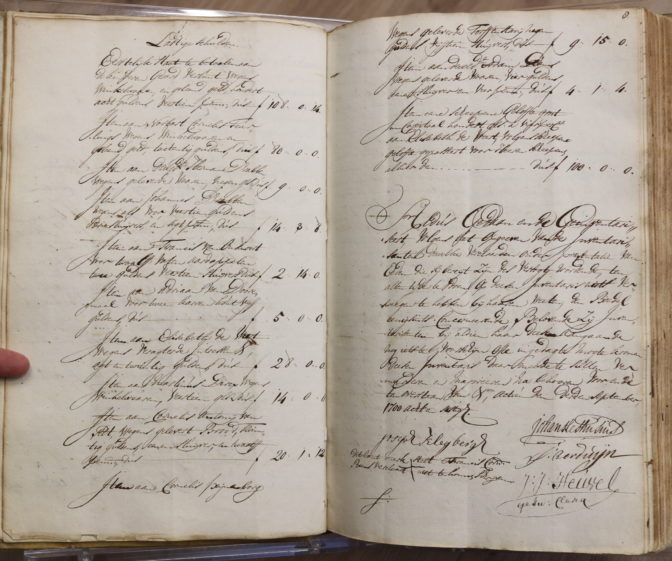Estate inventories tally the assets and debts of a person, family, or company. They were typically created for people of means. You are unlikely to find them for poor ancestors. Different regions have different customs, but in general, you are unlikely to find them before the 1600s, though you may find earlier examples.
The most important reasons for creating an estate inventory are:
- ensuring the rights of minor heirs after a parent died.
- documenting what a spouse brought to a marriage.
- documenting the situation in case of a bankruptcy.
Contents of an estate inventory
Estate inventories may include the following information.
Assets:
- Real estate
- Moveable goods, often described per room
- Livestock
- Jewelry, clothes, household textiles
- Bonds or other investments
- Money owed to the estate, for example for provided goods or services
- Money lent to others
- Cash
Liabilities:
- Loans from others
- Debts, e.g. to suppliers, doctors, rent, taxes
- Funeral costs

Estate inventory of Jan Hendrik Smulders and Catharina Willem Cleijberg
How to use estate inventories
Estate inventories give you an idea about the material wealth of your ancestors. With poor ancestors, the assets may barely have exceeded the liabilities, or there may even be a negative balance. The inventory will tell you whether they owned houses, or whether they probably rented the places where they lived and/or worked. You can see if they had money to spare, if they invested in business ventures or bonds, or lent money to others.
Estate inventories can give you more insights into the occupations of your ancestors. I have found out one ancestor was a beekeeper, because his inventory included several beehives. Another ancestor owned a loom as well as livestock, showing someone in the household took up weaving to supplement their income. In another case, the inventory included many food items and the money owed to the estate included many open accounts for food supplies, indicating the ancestor traded in food.
Detailed estate inventories can tell you about the household composition. A house with only one table and four chairs unlikely had more than four people living there. If there were three spinning wheels in the house, there were likely at least three women living there in the not so distant past.
Estate inventories can also provide evidence of family relationships. Sometimes, money was owed for dowries, children from a previous marriage still had a claim on the estate, or money was borrowed to family members.
In some cases, estate inventories can provide evidence for a marriage. This is particularly useful in areas with record loss, where the original marriage record may have been lost.
See the Case Study – Using Estate Inventories for an example of how an estate inventory can be used to research a family.
Where to find estate inventories
You may find estate inventories in different places. After 1811, they can typically be found in notarial records or in bankruptcy files. Before 1811, you may find them in notarial records in places that had notaries, or in the records of the local courts. If the estate inventory was created to protect the interests of minor heirs, you may find those in the records of the orphan chamber in areas with orphan chambers, or in local court records.
You may find them listed as boedelinventaris (estate inventory) or boedelbeschrijving (estate description). Sometimes, they are in separate series, sometimes as part of a longer series of miscelanneous records. Whether they are indexed or digitized depends greatly on the specific time and place.
Dutch Genealogy Source Score
 Amount of information about births, marriages, deaths
Amount of information about births, marriages, deaths
 Amount of background information about your ancestors
Amount of background information about your ancestors
 Online availability of scans
Online availability of scans
 Online availability of indexes or transcriptions
Online availability of indexes or transcriptions
 Easy to understand if you don’t know Dutch
Easy to understand if you don’t know Dutch

